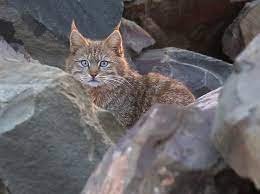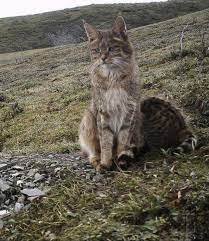
The Chinese mountain cat, Felis bieti, is a rare and little-known wild cat endemic to the high-altitude grasslands and mountain steppes of the Tibetan Plateau in western China. Oen mistaken for a Pallas’s cat due to its stocky build and dense fur, it is distinguishable by its relatively longer legs, lessened face, and more defined stripes on its legs and tail, along with black tips on its ears. Its thick, grizzled brown-grey coat provides excellent insulation against the cold and superb camouflage in its rocky, arid habitat. This elusive feline is primarily nocturnal and solitary, preying mainly on pikas, voles, and other small rodents, which it skillfully hunts near their burrows. Its unique adaptations allow it to thrive in one of the world’s most challenging environments.

The Chinese mountain cat plays an important ecological role as a key predator in the unique and fragile high-altitude ecosystems of the Tibetan Plateau. By preying on abundant rodent species, particularly pikas, they help regulate these populations, which prevents overgrazing of the sparse vegetation and helps maintain the delicate balance of the grasslands. Their presence is an indicator of a healthy and functioning high-altitude ecosystem, reflecting the availability of prey and the integrity of their specialized habitat. As a rare and endemic species, its conservation is crucial for preserving the unique biodiversity of the Tibetan Plateau, an area facing increasing pressures from human activities and climate change. Protecting the Chinese mountain cat is essential not only for the survival of this enigmatic feline but also for the ecological well-being of a globally important and vulnerable landscape.
Every day, wild cats around the world face threats like habitat loss, poaching, and natural climate progression. But hope isn’t lost. With your support, we can protect these majestic animals and preserve their habitats.
Join our growing community of wildlife champions and help create a safer future for all 40 wild cat species.
Zoo-EV is a nonprofit organization dedicated to the protection and preservation of the world’s 40 wild cat species through education, community engagement, and conservation initiatives. Zoo-EV is recognized as a 501(c)(3) tax-exempt organization by the IRS, with the Employer Identification Number (EIN) 88-3636567.